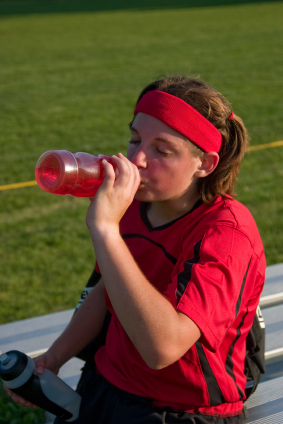 In deciding when it is too hot to play sports depends on the heat index. In modifying or cancelling sports practices, keep in mind the following:
In deciding when it is too hot to play sports depends on the heat index. In modifying or cancelling sports practices, keep in mind the following:
- Hot, dry weather can be extremely dangerous. Because sweat evaporates very quickly in such conditions, your child won't feel sweaty, and neither you nor your child may recognize how much water he or she has lost.
- As the relative humidity increases, the effectiveness of sweating in cooling the body decreases.
- When the relative humidity is high, sweat drips off the skin so that the cooling benefit of evaporation is lost even at cooler temperatures, resulting in a build-up of body heat.
Some groups have issued guidelines for modifying or canceling practice based on the heat index (air temperature and the humidity). One of the strictest is the one issued in 2009 by the Tennessee Secondary School Athletic Association:
| Heat Index under 95° |
All sports:
|
| Heat Index 95° to 99° | All sports:
Reduce time of outside activity. Consider postponing practice to later in the day Re-check temperature and humidity every 30 minutes to monitor for increased Heat Index |
| Heat index 100° to 104° | All sports:
Contact sports and activities with additional equipment
|
| Heat index above 104° |
All sports:
|
While limiting or cancelling practices may be possible in some areas in the United States, in many others it is not possible. For instance, a 1991 study of environmental conditions in Alabama over a 5-year period found that there was no time during the month of August when it was considered safe for football practices or games. Similar results were noted for the southern half of that state in the month of September.
Where cancelling or modifying practices or games because of high heat or humidity is impossible, others steps to reduce the risk of heat illness, especially for football players, should be taken.
Revised and updated May 19, 2018
Brooke
de Lench is the Founding Executive Director of MomsTeam Institute and the
publisher of MomsTeam.com. Producer of: The Smartest Team: Making High School
Football Safer (PBS) and author of: Home Team Advantage: The Critical Role of
Mothers in Youth Sports (Harper Collins) is well known as the “Mother of Youth
Sports Safety” for her tireless advocacy and solutions based work in safeguarding
young athletes.








